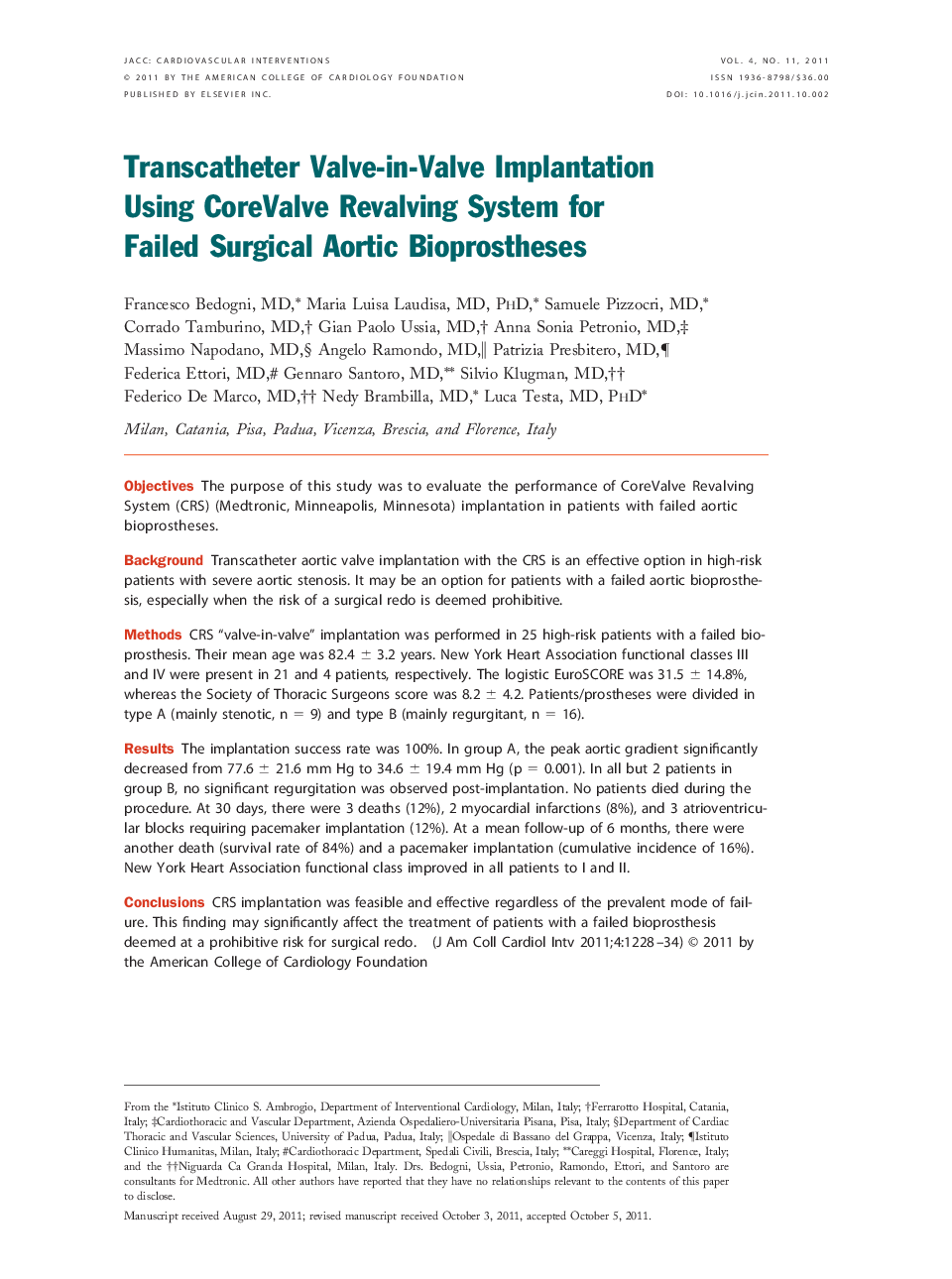| کد مقاله | کد نشریه | سال انتشار | مقاله انگلیسی | نسخه تمام متن |
|---|---|---|---|---|
| 2940795 | 1177043 | 2011 | 7 صفحه PDF | دانلود رایگان |

ObjectivesThe purpose of this study was to evaluate the performance of CoreValve Revalving System (CRS) (Medtronic, Minneapolis, Minnesota) implantation in patients with failed aortic bioprostheses.BackgroundTranscatheter aortic valve implantation with the CRS is an effective option in high-risk patients with severe aortic stenosis. It may be an option for patients with a failed aortic bioprosthesis, especially when the risk of a surgical redo is deemed prohibitive.MethodsCRS “valve-in-valve” implantation was performed in 25 high-risk patients with a failed bioprosthesis. Their mean age was 82.4 ± 3.2 years. New York Heart Association functional classes III and IV were present in 21 and 4 patients, respectively. The logistic EuroSCORE was 31.5 ± 14.8%, whereas the Society of Thoracic Surgeons score was 8.2 ± 4.2. Patients/prostheses were divided in type A (mainly stenotic, n = 9) and type B (mainly regurgitant, n = 16).ResultsThe implantation success rate was 100%. In group A, the peak aortic gradient significantly decreased from 77.6 ± 21.6 mm Hg to 34.6 ± 19.4 mm Hg (p = 0.001). In all but 2 patients in group B, no significant regurgitation was observed post-implantation. No patients died during the procedure. At 30 days, there were 3 deaths (12%), 2 myocardial infarctions (8%), and 3 atrioventricular blocks requiring pacemaker implantation (12%). At a mean follow-up of 6 months, there were another death (survival rate of 84%) and a pacemaker implantation (cumulative incidence of 16%). New York Heart Association functional class improved in all patients to I and II.ConclusionsCRS implantation was feasible and effective regardless of the prevalent mode of failure. This finding may significantly affect the treatment of patients with a failed bioprosthesis deemed at a prohibitive risk for surgical redo.
Journal: JACC: Cardiovascular Interventions - Volume 4, Issue 11, November 2011, Pages 1228–1234